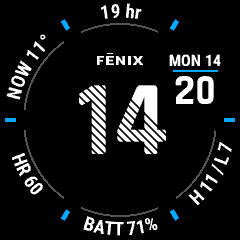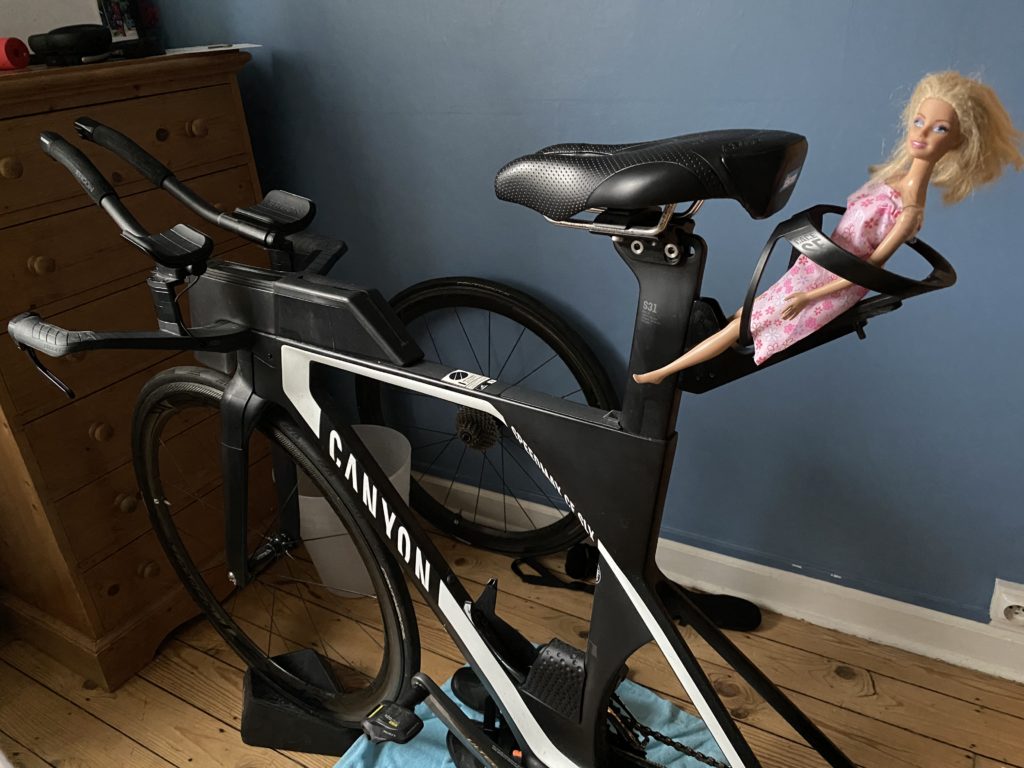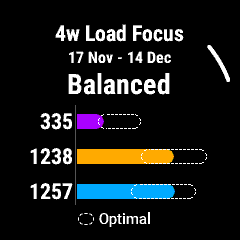Hi guys !
Another short post in line with the previous one since I incline with more and more trust to my Garmins’ algorithms to guide workouts and recovery. (The watch might be an excuse to keep some geek traits in my personality but just taking it easy is the new motto. Good is good enough !)
So, I do less volume. I am eventually getting aware of the glass ceiling of training volume when you take in account work and family. I think that I feel good and fresh for workouts around 8 hours of training, 10 hours is ok. But when I push around 12ish+ I think I get too much fatigue without the reward of physiological adaptations and progress.
For example, this week I have not done two running workouts I had planned. One for schedule issue, another one because the turbo trainer in the morning was very taxing (TEae 4,1 and TEan 2,1). Of course I can find the discipline to drag myself out to do the second workout of the day but I think it’s not going to make good adaptations. Now, I see more and more « Productive » and « Maintaining » status on my Garmin and I favor this to « Unproductive ». (More on training status here). I also monitor the recovery time on my watch face to encourage my « Grandpa from Corsica behaviour » (personal strategy to favor naps, walking slow and not getting in a rush) With this kind of form, I thought that it was time to add a bit of high intensity training. I did it on the side of caution but I found some joy in it and I was rewarded with good numbers
With this kind of form, I thought that it was time to add a bit of high intensity training. I did it on the side of caution but I found some joy in it and I was rewarded with good numbers 

On another cool advantage of this is that I merely get more fun when I bang a workout. Fresher legs, better mood ! I also expect to get rid of some chronic running niggles. There is no point in logging many running kilometers now, I want to take advantage of the COVID-19 year to take it easy on the running side and this year is gonna be the second smallest year in terms of running mileage I think.
In the end, this year is still on its way to becoming the biggest year in terms of training volume, but I understand that this is not a recipe for success for me.
Going forward is a process where you engage your gravity point forward. You take the risk of falling, you get an unbalanced position during a fraction of the time, to find a new balance.





 P.S. j’ai constaté juste après avoir écrit ce billet que l’algorithme de charge d’entrainement me voyait dans un potentiel pic de forme en même temps que l’analyse per effort sur le vélo notait ma condition physique comme moins bonne que d’habitude. LOL.
P.S. j’ai constaté juste après avoir écrit ce billet que l’algorithme de charge d’entrainement me voyait dans un potentiel pic de forme en même temps que l’analyse per effort sur le vélo notait ma condition physique comme moins bonne que d’habitude. LOL.